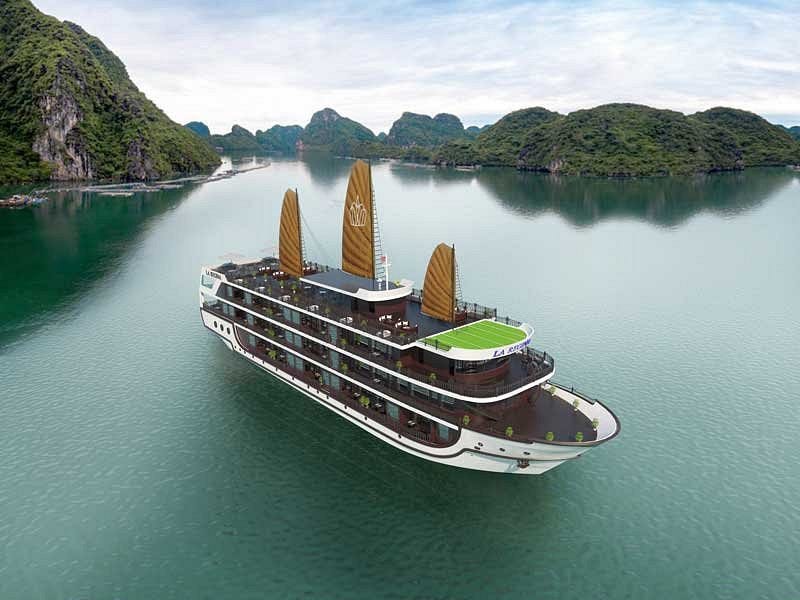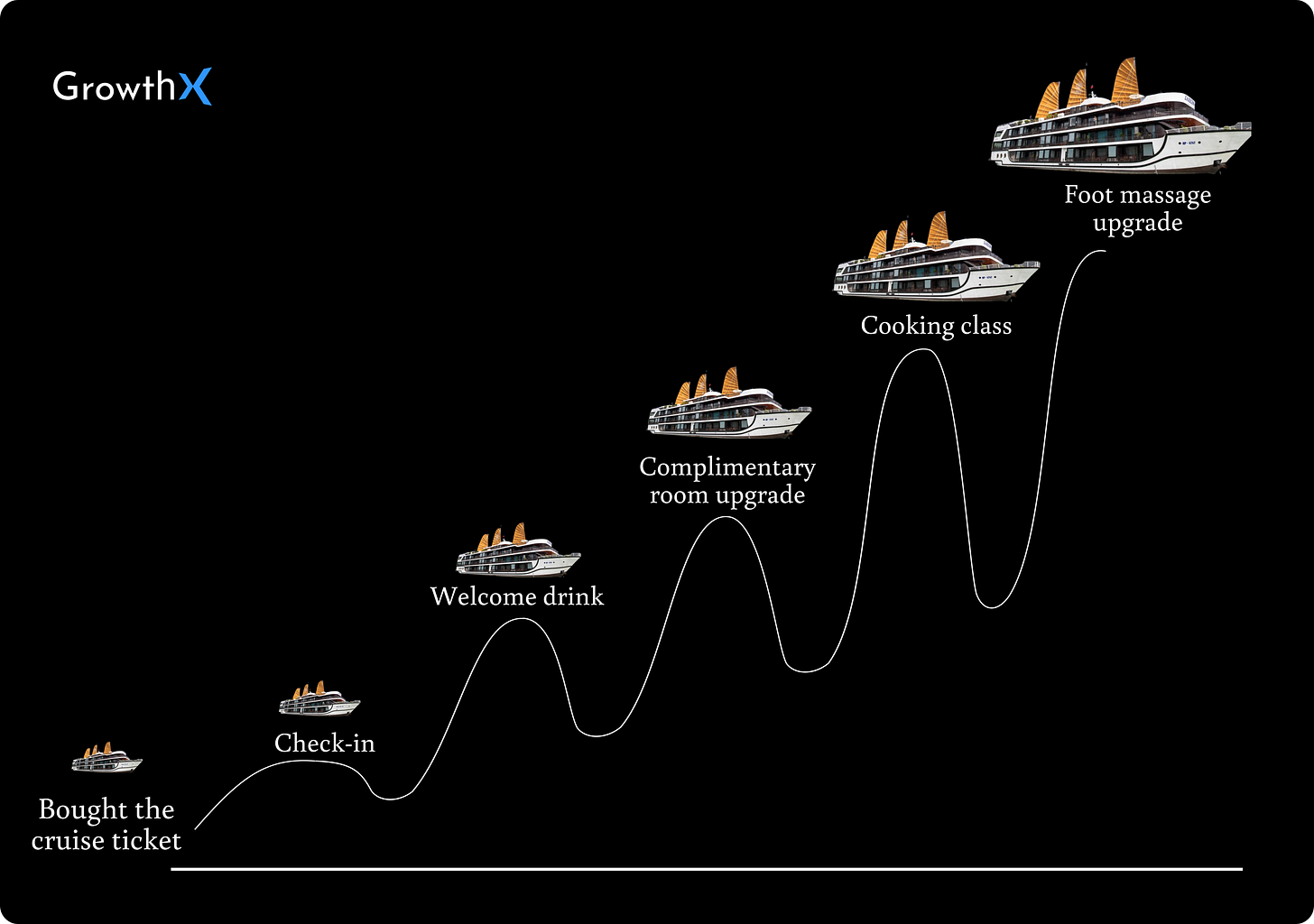What to learn from Cruise ships about pricing design? 🛳 💰
Why humans need to be re-assured about their purchase decisions.
Welcome to the 141st edition of the GrowthX Newsletter. Every Tuesday & Thursday I write a piece on startups & business growth. Today’s piece is going to 95,300+ operators & leaders from startups like Google, Stripe, Swiggy, Razorpay, CRED & more
I spent $500 on a cruise ship 🤯
At first, it did feel “expensive” 💰
Here’s why I won’t regret it ⬇️
Quick context 🗓
I’m writing this article from the beautiful city of Hanoi (Vietnam’s capital city) & I spent the last 48 hours on a cruise called La Regina. As someone who was born in a middle class maharashtrian family - spending $500 on a cruise experience was a bit too much.
I remember going back & forth 🔁
10s of debates with my beautiful wife on whether we should spend that amount of money on a single night - the price felt a bit too much.
Fast forward to this moment ✨
I feel the experience was worth every single penny.
Here’s how Cruise ships have cracked pricing ⬇️
The basic hygiene is sorted ⚡️
The airport to last mile transport, great check-in process, smooth currency exchanges, elegantly designed ships - the bread & butter of any cruise ship experience.
Cruise ship market is limited 🎯
It’s tiny. Ask your friends & family - there will be hardly a few who have experienced luxury cruise ships. It comes last in the Maslow's hierarchy of needs - I’m kidding ;)
The perceived value of experience is limited 🥺
If you go to Bookings.com/ MMT/ Airbnb - it feels similar to any other luxury hotel experience. So why pay upwards of $500 for a single night on a cruise.
The answer lies in selling the experience first and then justifying the cost of it later. The cruise don’t want to educate you on the price, they want you to trust them at first - counter intuitive, but works for them all the time.
So how do Cruise ships nail pricing <> expectation?
1/ They want you to feel the price pinch.
Take a glance at how Cruise ships are designed - grand and larger than life. The first entry point helps you buy something aspiration. It also give you that small moment where you feel like - I can afford it, even when you can’t.
2/ They create “peaks” around your experience.
From the time you onboard the ship to the time you checkout, you will always find these peak moments that you will remember for a very long time.
And I’m guilty of falling pray to one of these peak moment during my recent cruise experience, I had a surprise opportunity to attend a cooking class & learn how to make a Vietnamese Spring roll.
Combination of #1 & #2 does is interesting ✨
First, it makes the purchase worthwhile for the user. Second, it solves for a very strong word of mouth around pricing - the customer goes back being an evangelist and influences their social circle under the wrap of “it’s worth the price”.
And, that’s the core lesson for today.
Go back to your product - ask yourself
”Am I solving for post purchase aha moments?”
”Are they driving enough “worth it” moments?”
”Will it solve for the pricing education?”
Think, reflect and do something about it!
That's all for now ✨
As some of you already know, I’m travelling in Vietnam until late April. I’m writing this article in a beautiful Airbnb in Hanoi & will be flying out to Da Nang by the time you read this article. If you have any suggestions about food, or places to visit in & around Da Nang / Ho Chi Minh City - do send them to me by replying to this email.
Thanks for reading until this point, see you in the next one.
Thank you for supporting this newsletter 🪄
We spend a sizable portion of our time writing pieces for this newsletter. Share it with your closed circle / Twitter if you find it interesting.











While we planned for Vietnam trip - Cruise was the biggest expense on the tour. Totally resonate with this.
While planning my friend said “Cruise is non-negotiable”.